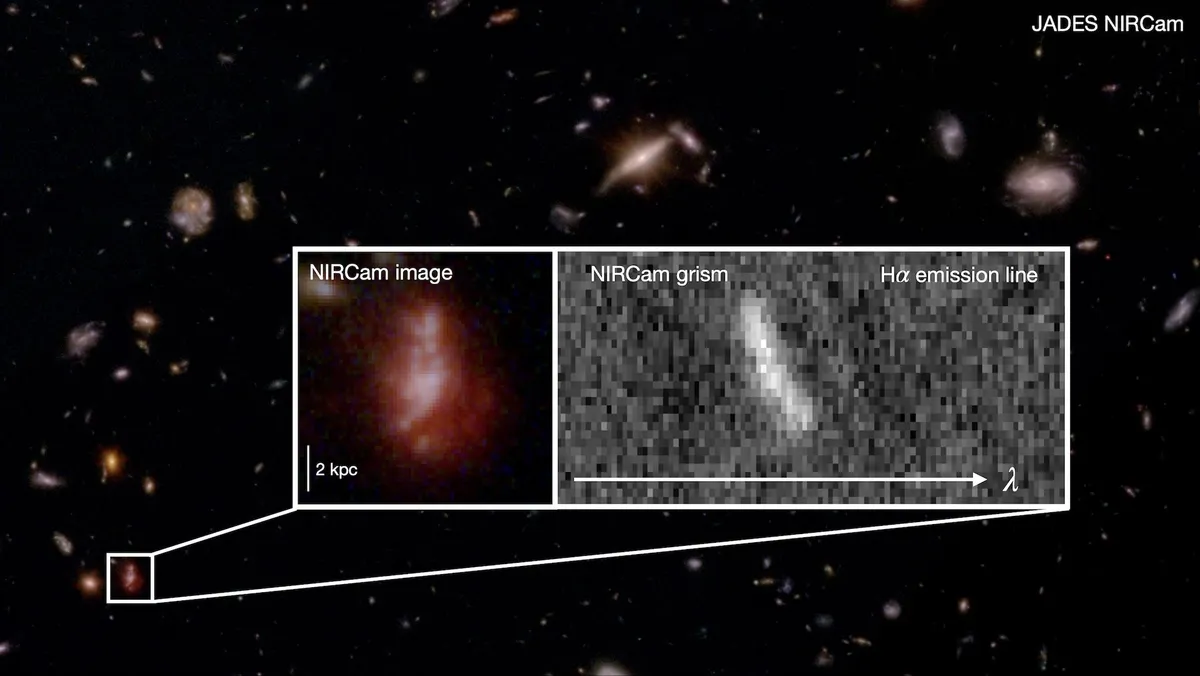
In a groundbreaking study, scientists have unveiled that galaxies in the young universe resembled cosmic toddlers, characterized by their chaotic and turbulent nature. Utilizing the advanced capabilities of the James Webb Space Telescope (JWST), researchers examined over 250 galaxies dating back to the early universe, specifically between 800 million and 1.5 billion years after the Big Bang. This period is crucial as it represents a formative phase in the cosmos, which is approximately 13.8 billion years old.
Published in the journal Monthly Notices of the Royal Astronomical Society on October 21, the study highlights significant insights into the evolution of galaxies. Lead author Lola Danhaive, a doctoral candidate at the University of Cambridge's Kavli Institute for Cosmology, communicated with Live Science, noting that the majority of the galaxy population was experiencing a restless phase during their youth. Unlike previous research that primarily focused on larger, more stable galaxies, this team directed their attention towards less-massive galaxies and identified what they referred to as messy kinematics.
Danhaive elaborated that these galaxies do not exhibit the stable, rotating disk structure typical of the Milky Way and its neighboring galaxies. The findings suggest that the turbulence experienced during the universe's early history was considerably higher than previously understood. Earlier studies were skewed towards larger galaxies, making the smaller, less organized structures targeted in this research appear less visible.
The researchers discovered that the turbulence within these galaxy disks is largely driven by substantial amounts of gas, which fuels intense star formation and induces gravitational instabilities. This chaotic assembly phase is marked by strong bursts of star creation and high gas concentrations that disrupt the orderly motions of the gas disk. As galaxies evolve, they gradually increase their mass and transition into more stable structures.
Interestingly, structures akin to the Milky Way formed more recently, within the last few billion years. This transformation occurred as the available gas was consumed by stars, causing a decline in the overall gas content within the galaxy. As a result, mature galaxies can evolve and change more smoothly compared to their younger counterparts.
The insights gained from this research would not have been feasible without the James Webb Space Telescope. Positioned in a gravitationally stable location far from the disruptive light of Earth and the moon, the JWST has the unique capability to delve deeper into space than any of its predecessors. It consistently uncovers some of the earliest galaxies known to exist.
Danhaive noted that the combination of the JWST's observations and advanced simulations is enhancing researchers' understanding of bursty star formation and the influence of gas on a galaxy's dynamics. "Overall, our work opens a window into the dynamics of early galaxy formation," she stated, emphasizing the significance of these findings.
Looking ahead, the research team plans to investigate the inflows and outflows of gas in individual galaxies by analyzing how this gas is chemically enriched. They predict that inflowing gas will be relatively pristine, while outflowing gas will contain a richer array of chemical components, influenced by contributions from individual stars within the galaxy.
This exploration of gas dynamics may provide valuable insights into why certain galaxies exhibit faster rotation rates than others. "There is so much more to uncover with JWST's amazing capabilities," Danhaive concluded, expressing enthusiasm for further exploration into the early stages of galaxy formation.